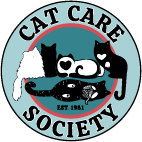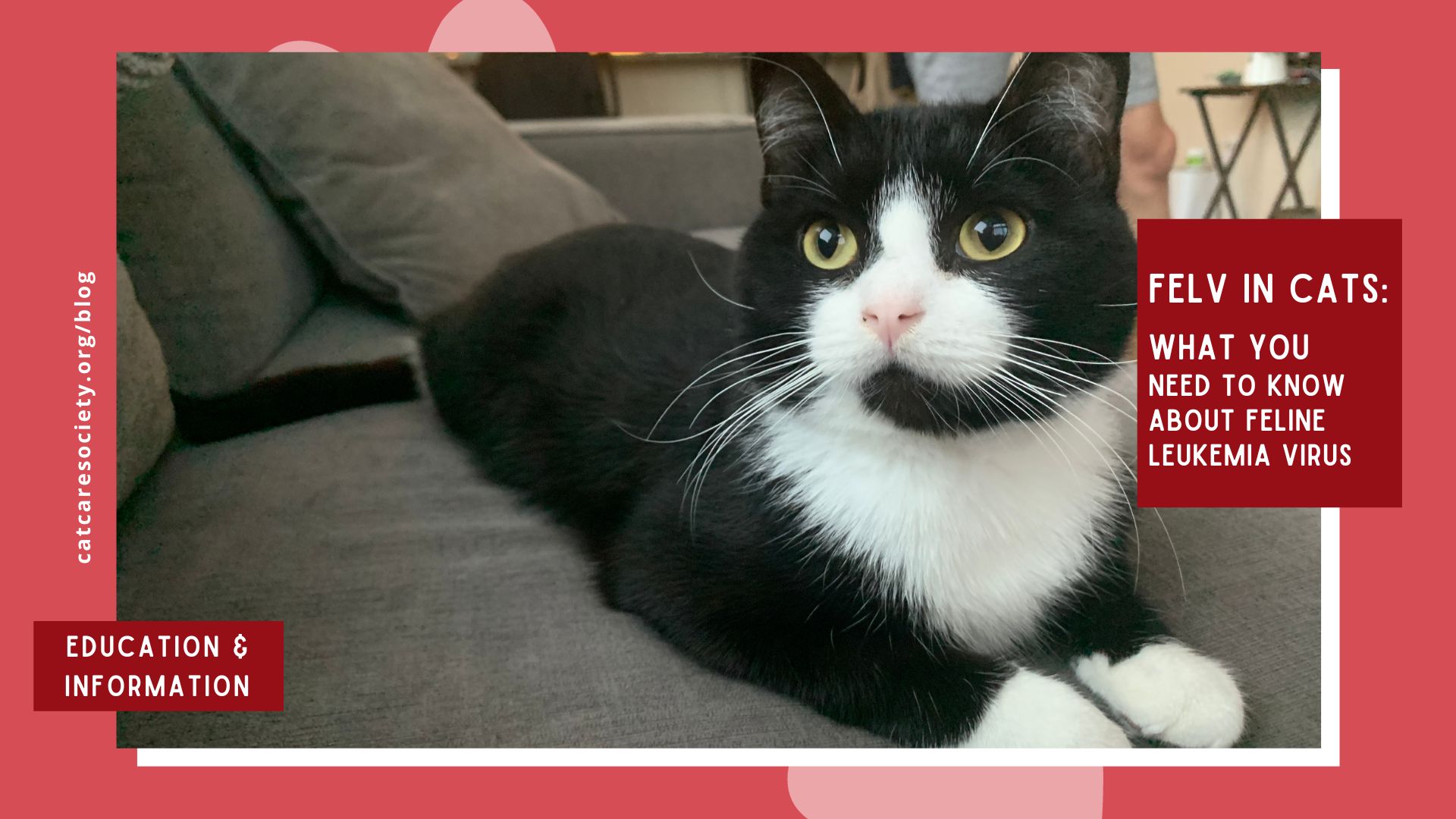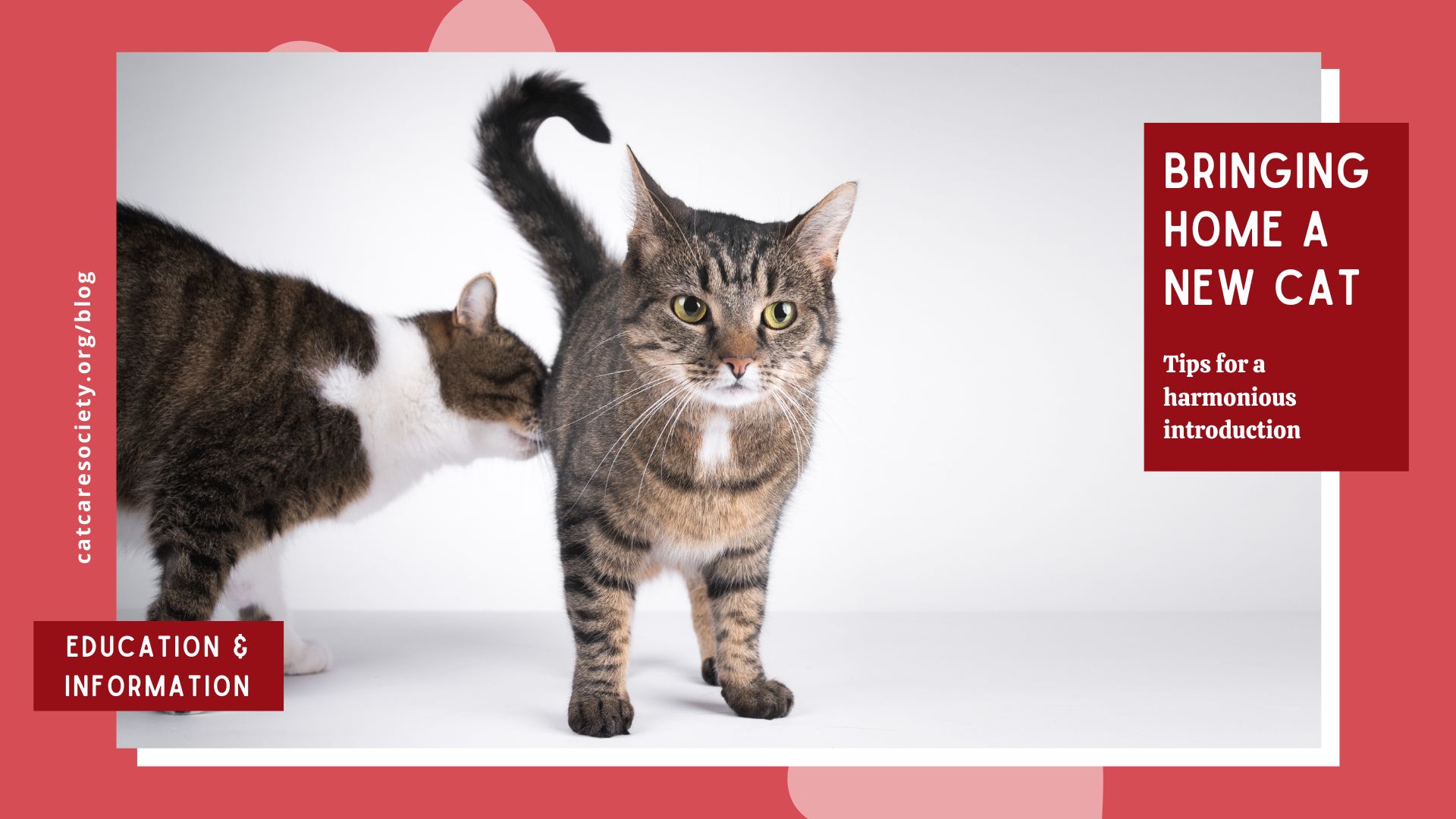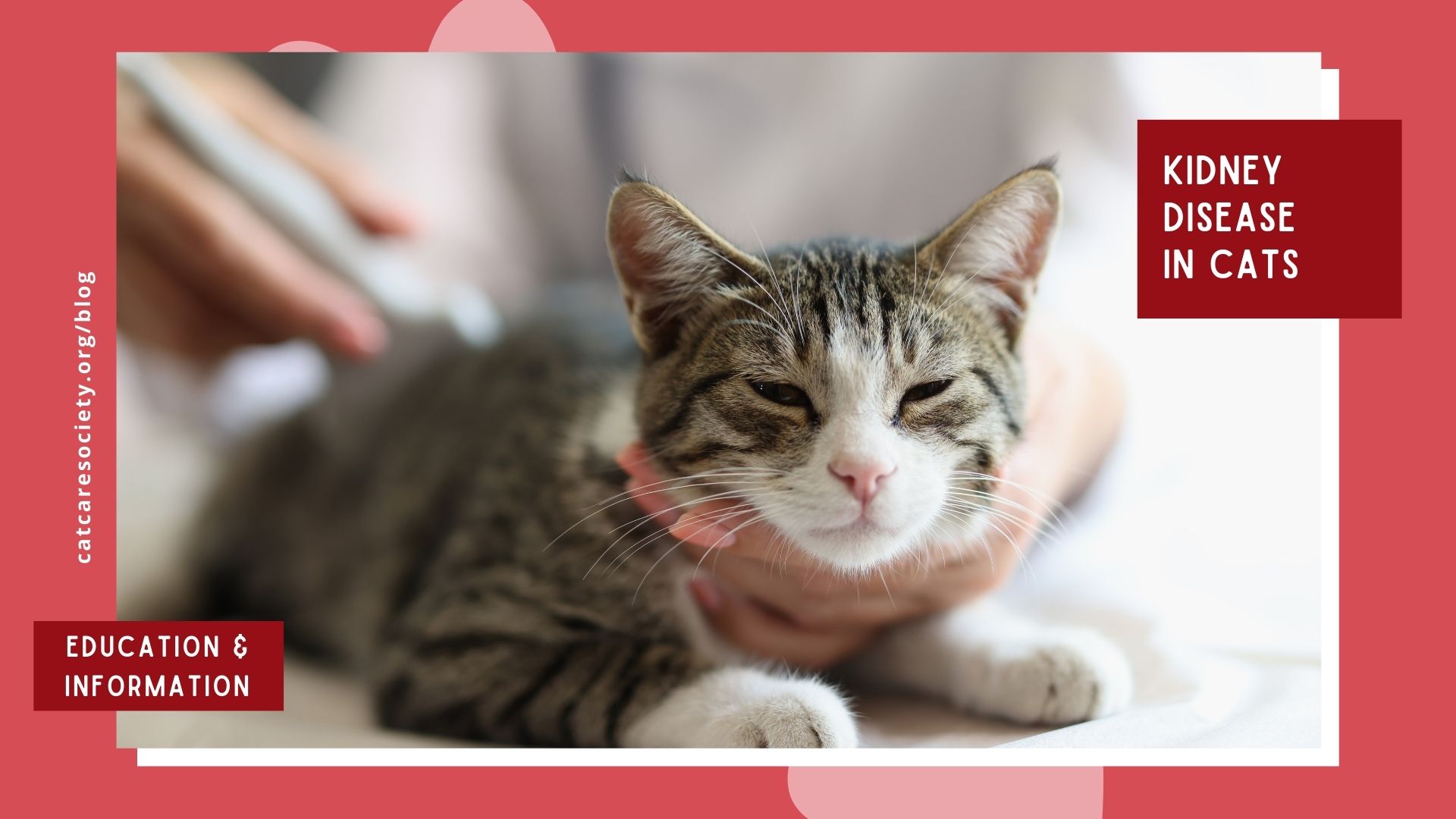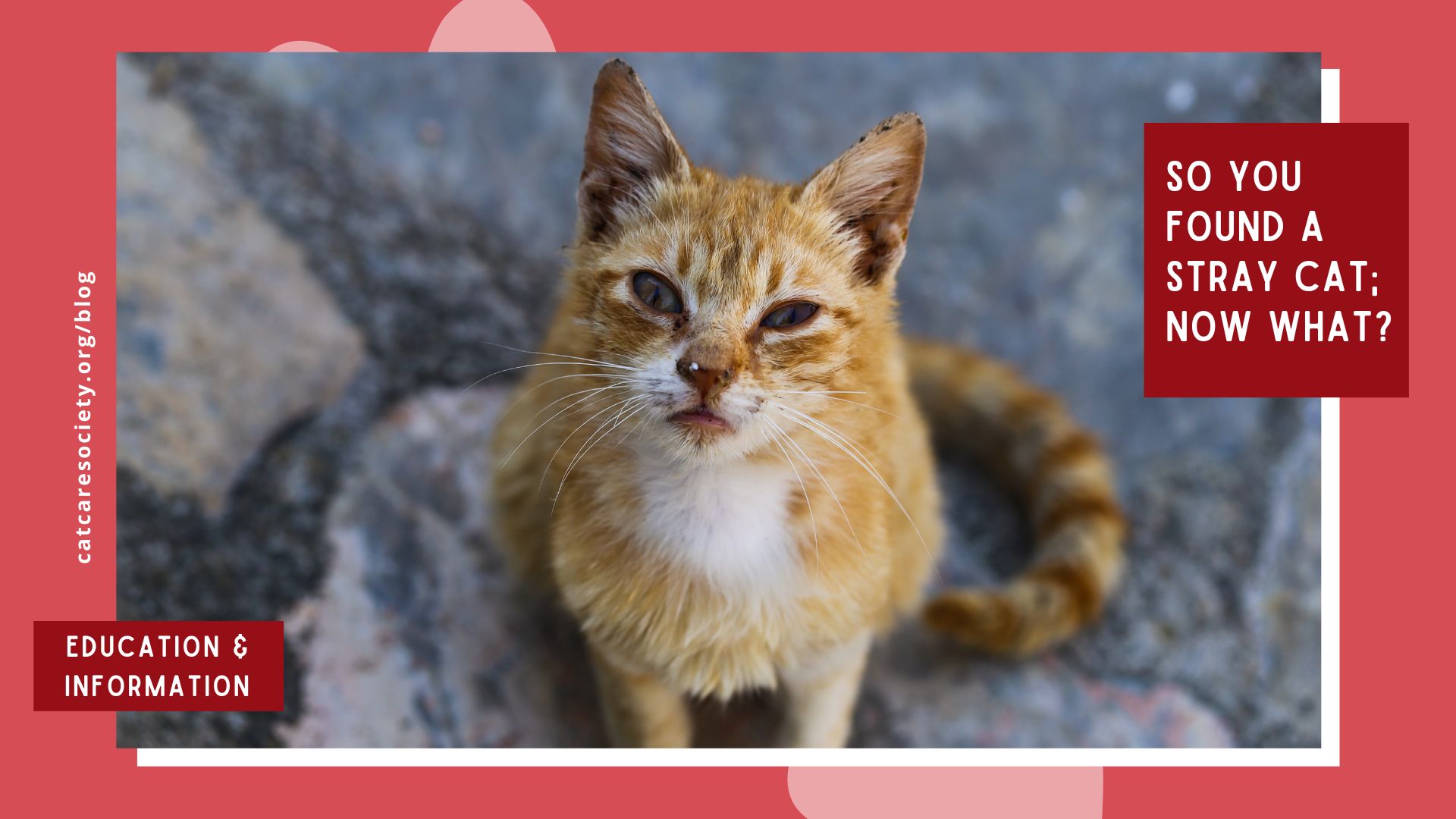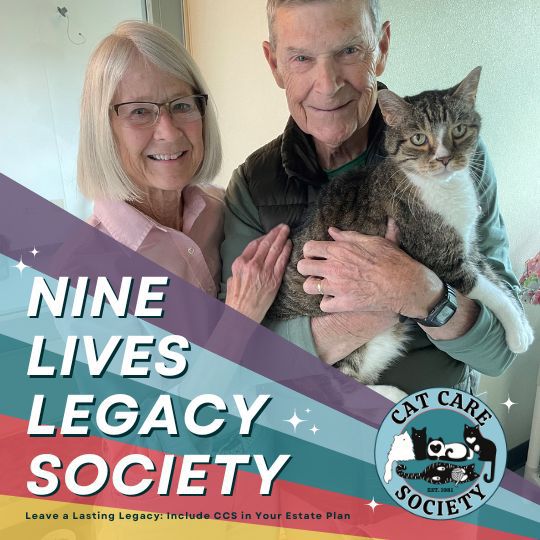Looking for information on FIV? Read our companion blog post here!
A feline leukemia virus, also known as FeLV, diagnosis used to be a literal death sentence for a cat. Even just 10 years ago, many shelters required euthanasia for all cats that tested positive for it. Now, we know that cats can live with this condition, but there are still many nuances in the understanding and treatment of FeLV.
What is FeLV?
Despite its name, FeLV is not actually a form of cancer or leukemia. Instead, it is a retrovirus (in the same family as Feline Immunodeficiency Virus or FIV) present in approximately 2-3% of all cats in the United States. FeLV invades and replicates in cells of the cat’s immune system and tissues that create blood cells. Low white blood cells are a sign of a weakened immune system, and illnesses acquired from this virus are typically related to a weakened immune system.
FeLV is defined as one of the most common feline infectious diseases in the world, and complications or progression of the virus can cause cancers like leukemia and lymphoma, and other FeLV-associated diseases: neurologic, secondary infection, immune mediated disease, etc.
There are actually a few different subgroups of FeLV, as well as different stages and outcomes of the disease as it is a dynamic virus that can switch back and forth between infectious and non-infectious states, making testing pretty tricky.
How Do Cats Get FeLV?
Whereas FIV used to be thought of as the “fighting disease,” FeLV has been known as the “love virus” or “friendly disease,” due to its ability to be easily transmitted to other cats through mutual grooming. It can also be passed through shared food and water bowls or litter boxes, fighting, or from a pregnant or nursing mother cat to her kittens. The virus sheds in high quantities of saliva and nasal secretions, and can also be found in urine, feces and milk of infected cats.
Feline leukemia is passed only from cat to cat, meaning humans, dogs and other animals cannot contract it.
A blood test can confirm whether or not FeLV is present in your cat. If the initial test is positive, a second sample is sent to a lab to confirm diagnosis. Cats can test positive within a few weeks of exposure, and most cats who are positive were infected within 30 days. Younger cats are more susceptible, and sadly, infected kittens have an average life span of just two years. Most vets recommend retesting after six weeks if a test has questionable results.
Can FeLV be Treated?
While certain symptoms can be managed and supportive care can be offered, there is unfortunately no cure for feline leukemia. There are some expensive treatments available at some vets, but these are outside the scope of shelter use.
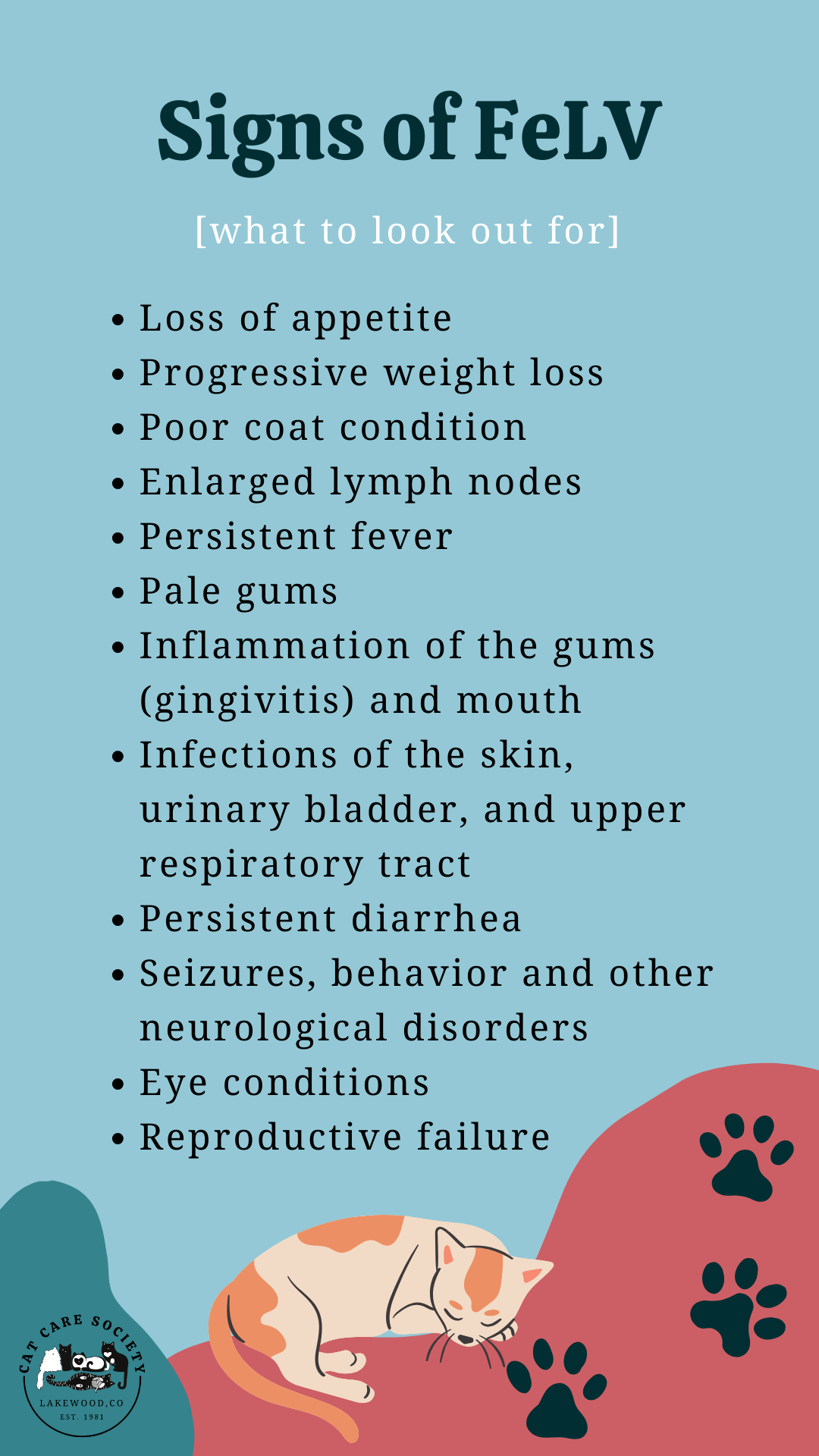
And while there is no commercially available vaccine for FIV, there is, however, a vaccine available for FeLV in negative cats. The Feline Leukemia vaccine is recommended as a core vaccine by the American Animal Hospital Association and American Association of Feline Practitioners.
Spaying and neutering your cats and vaccinating your FeLV negative cats is the best way to stop the spread of FeLV.
What Does a FeLV Diagnosis Mean for My Cat?
Although a diagnosis of FeLV can feel devastating, it is important to realize that cats with FeLV can live mostly normal lives for prolonged periods of time — though their lifespans will be shortened by several years. On average, most FeLV+ cats live about 2-5 years after diagnosis.
Because FeLV affects the immune system, like FIV, it means that your cat is more susceptible to other illnesses, and may not recover as quickly from common infections or after surgery. It’s important to note that FeLV itself does not cause death; rather, it is the subsequent diseases that often come up because of the weakened immune system.
Once a cat has been diagnosed, careful monitoring of weight, appetite, activity level, elimination habits, appearance of the mouth and eyes, and behavior is an important part of managing the disease. Maintaining dental care should be a priority, as infections of the mouth and gums can pass through the blood stream and cause more issues. Raw foods and unpasteurized dairy products should be avoided because of their high risk for food-borne bacterial and parasitic infections. A high-quality diet and low-stress environment will also be beneficial.
At Cat Care Society, once we see a positive FeLV test, we have a few possible courses of action. After another test, we can find out whether the disease is present in their bone marrow or blood. If it’s in only in their blood, the disease hasn’t progressed yet, and the cat actually has a chance of kicking the virus out through his or her immune response. If it’s already made it to their bone marrow, the bad news is that they will have FeLV for the rest of their life. It may lay dormant for awhile and the cat appears to be doing fine, but FeLV could rear its ugly head years down the road and cause the immune system to wreak havoc, progressively deteriorating a cat’s health. If this confirmatory test is negative, it might mean the disease is “floating around” and hasn’t made it to the marrow yet, and we test again in a month, explained CCS’ chief veterinarian Dr. Cecily Palamara.
If a FeLV positive cat is asymptomatic, this is good news for his or her quality of life! However, if the disease is progressive, the cat may display symptoms of anemia, lethargy, malaise and weakness. Because their immune system is suppressed, it may develop into leukemia or lymphoma. These cats often die young, and it can be upsetting to navigate.
Because of the severity of this disease, FeLV cats should be the only cat in a home or paired with another FeLV+ cat, and should be kept indoors.
If you want to add an FeLV cat to a household of negative cats, the safest option is to make sure that the other cats are adults and fully vaccinated against FeLV, Dr. Palamara advises. There is still a small risk of transmission, but the risk is low with immunocompetent, vaccinated adults.
How Does CCS Handle FeLV Cats?
Cat Care Society provides a safe haven for many special needs cats because we believe that all cats deserve a chance at a loving home, regardless of medical diagnosis. Therefore, we take in many FIV and FeLV cats that wouldn’t have a chance at other shelters.
When we receive new adult cats at the shelter, we screen for both FIV and FeLV so we know what we’re up against.
Many shelters don’t adopt out a cat with FeLV because they don’t want to put that burden on adopters, although some cities and states across the U.S. are becoming more progressive in the way they view this condition.
“I think, culturally the shelter sheltering and adoptive community have really evolved,” Dr. Palamara said. “Right now, we are not having a lot of trouble adopting out feline leukemia cats, which just speaks to Colorado’s unique adoptive community. These cats wouldn’t have this opportunity in other communities.”
Instead, we aim to be transparent with all potential adopters about a cat’s condition and his or her medical needs so that they can make an informed condition about what they’re willing to take on and manage their expectations. We’re so lucky that many CCS adopters are willing to give these cats the best life possible for however long they have left, which we think is a beautiful act of love.
Take it from Emma, a CCS adopter who brought home a FeLV cat named Maximus (pictured at top) back in 2020. She wasn’t planning on adopting a cat with FeLV, but Maximus caught her eye and stole her heart right away.
“When we adopted Maximus, he had FeLV and was diagnosed with a chronic upper respiratory illness,” Emma said. “He wheezed heavily and sometimes it seemed like he could barely breathe through the congestion. In the three years since, his nose has cleared up and his breathing is much better. He has very occasional FeLV-related issues like seizures, but they are rare. Overall he’s a happy cat, who loves playing games, following his humans around, staring out windows, and zooming up and down the stairs.”
If you’re thinking of adopting a cat with FeLV, we recommend talking with your veterinarian first as they will be the ones to help you navigate managing this disease. FeLV cats should not live with another cat unless he or she also has FeLV.
They may have a shorter life span and require more attentive care, but FeLV cats can be wonderful companions and deserve the chance to live happy lives filled with love.
Looking for more info on FeLV? Check out these recommended sources and resources!
